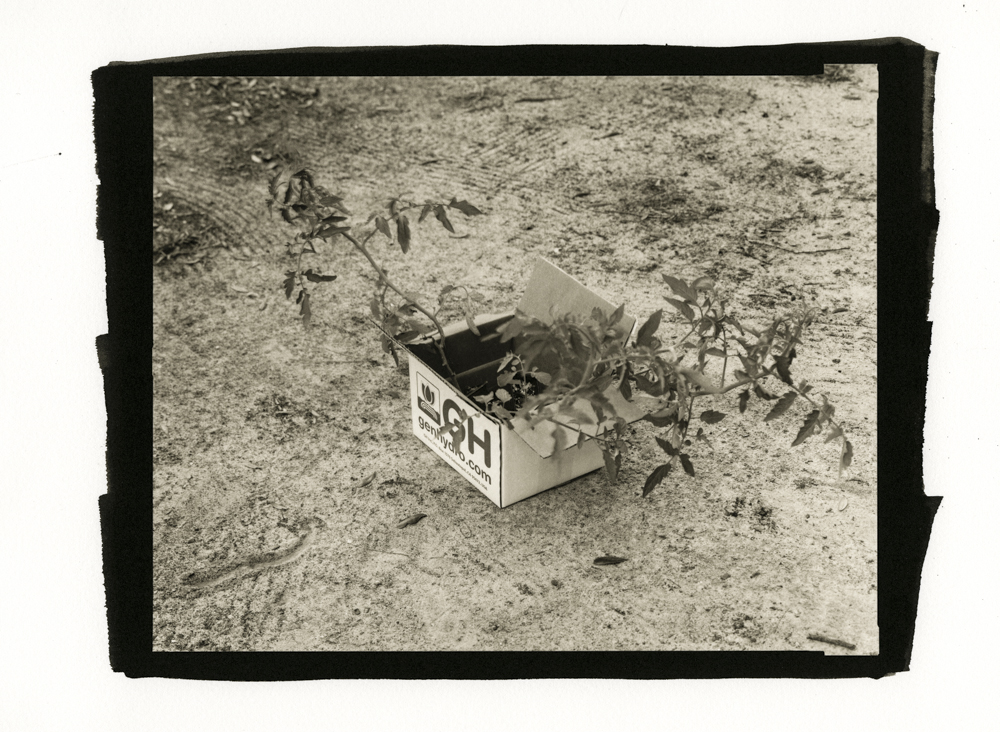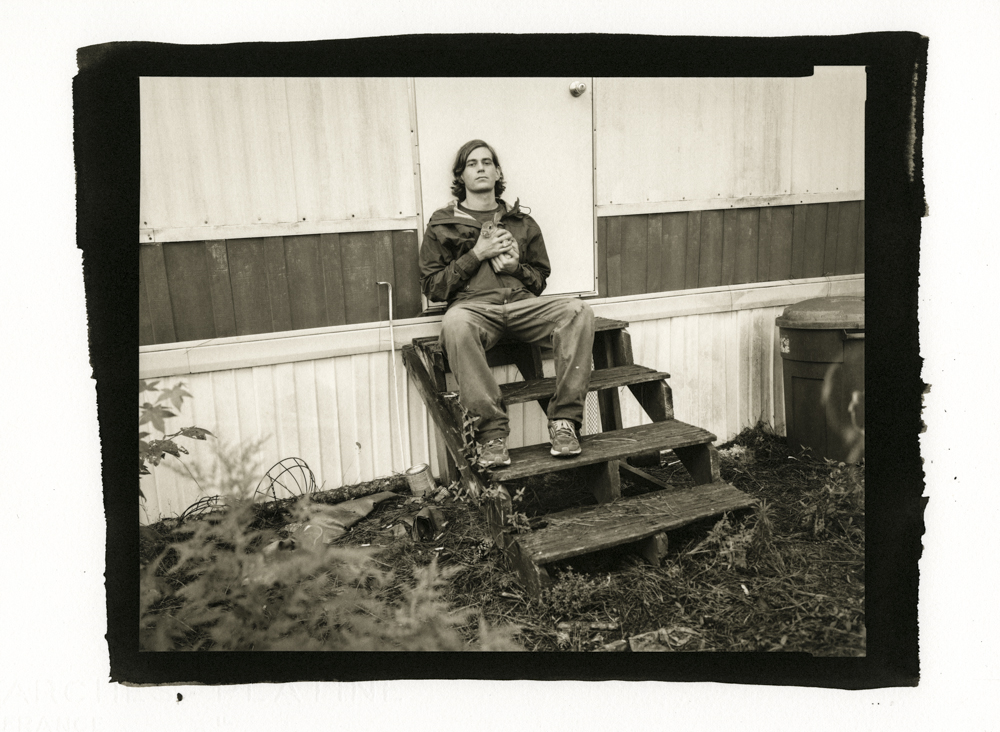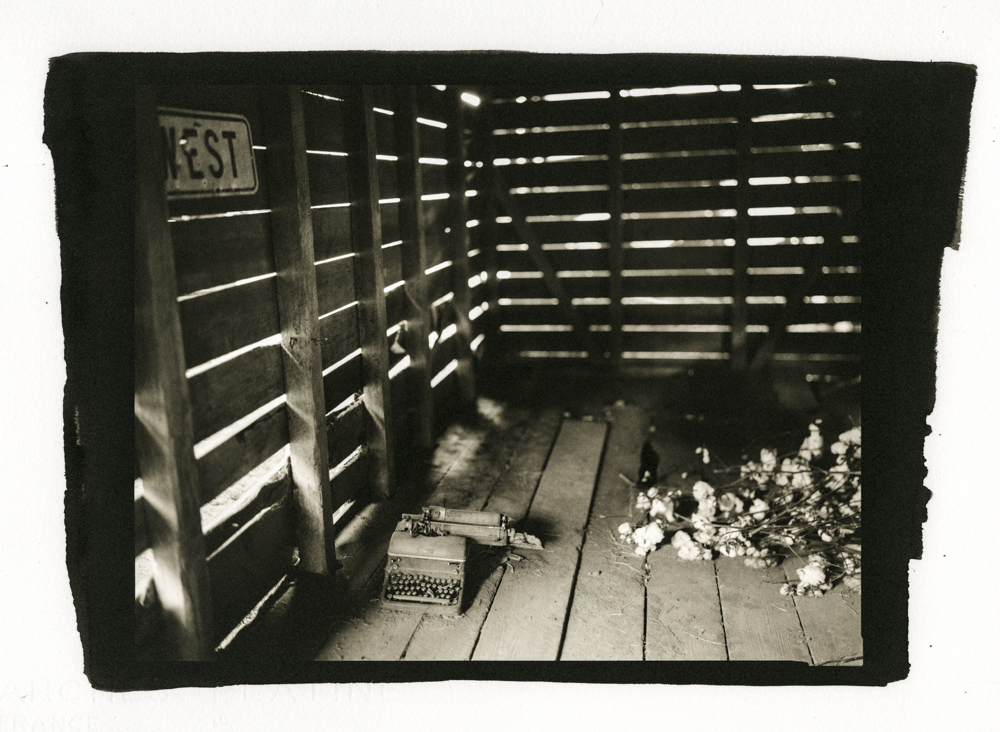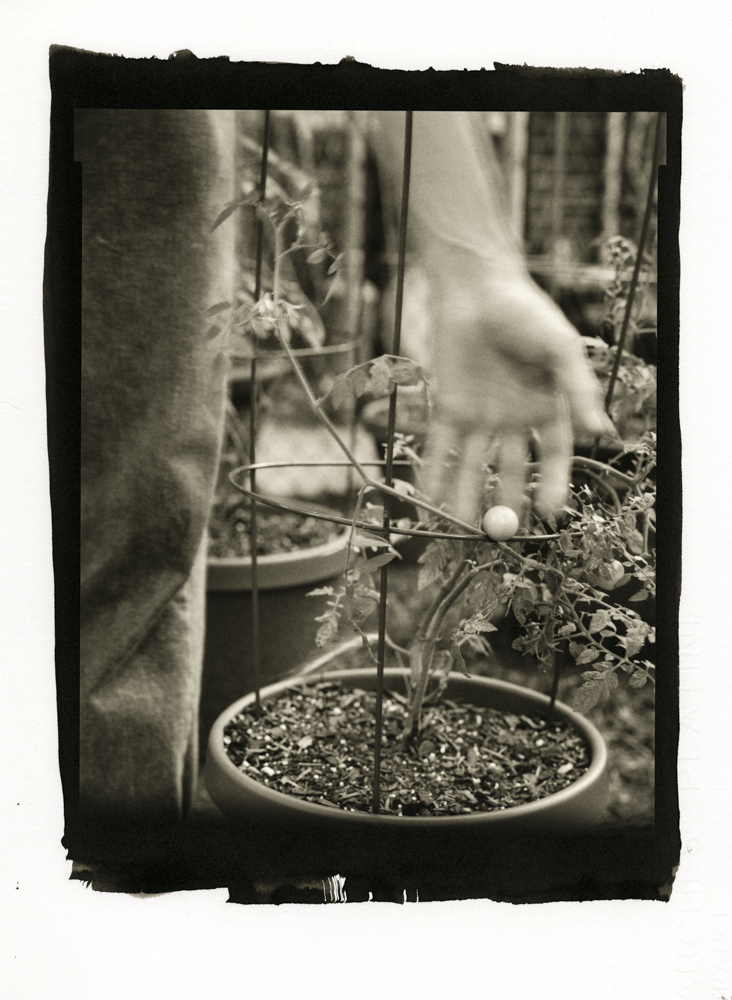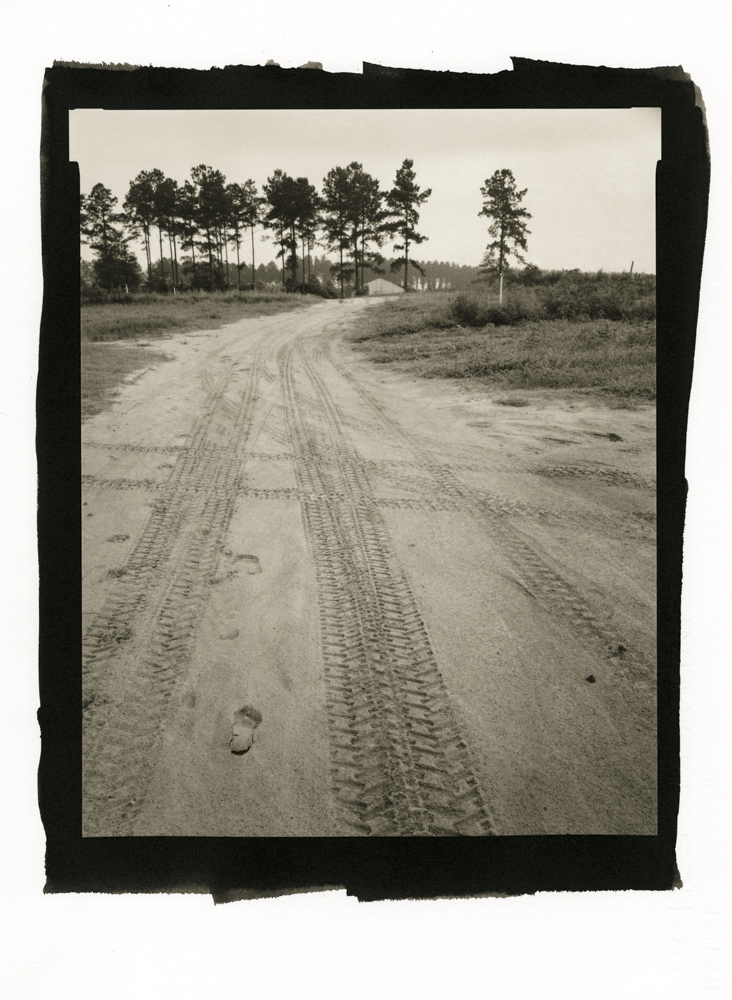Artist Blog
Every week an artist whose single image was published by Der Greif is given a platform in which to blog about contemporary photography.
The Moon and Precious Metals
Feb 09, 2014 - Allison Barnes
I tend to be drawn to photographs of the outdoors. I relate to the landscape on a personal level because of my formative years in a rural town, and as a photographer I adore the works of Barbara Bosworth, Michael Lundgren, Laura McPhee, and Cheryl St. Onge, whom each have a sensitivity to place and often reveal how place has shaped them or their imagery. But when I came upon Brett Schenning’s Inheritance, my senses went on-end because the work is so intimate, literally so close to the eluvium that I felt my hands digging into the sandy soil of the southeast United States. This work becomes an interesting comparison to David Welch’s, The New Farmers, being that it too explores the role of the small American farmer and how they place more value on the land than those who run commercial plots. Both series are shot with large format cameras and intertwine portraits with landscapes, but each body of work comes from a different part of the heart, though both exquisitely executed. Welch is a photographer making work in a place that he has returned to and lived in his entire life, while Schenning is integrating himself into the American Southeast (he hails from rural Wisconsin) though bringing an entire lifetime of farming with him. It is a purely natural response by both artists to confront the issues of home, identity, and the longevity of the landscape. I look at Inheritance and I see so many beautiful elements; fundamentals that make up a place and the people who make it a home of productivity that yields bountiful fruits, vegetables, and observation. Within this work one can get a sense of the intuition that exists within those photographed and the photographer himself. As the moon oversees the cycles of the farm, so does the moon appear in Inheritance. The images have a rhythm of their own, displaying the land, its uses, markers of daily ritual, interiors, and intimate portraits of plants and people. A cultivator presents her blistered palm, dirtied except for the perfect pale circle surrounding the sore; the trace of a bandage that slipped off from a mix of sweat and soil. Offering her lunar souvenir, she provides the viewer with a glimpse of human life that is integrated as part of the natural cycle. As Schenning traces these moments of human experience onto the sensitive plate of his camera, he also captures the collection of images in the body’s memory; an index of the human experience in nature. The moon arises again as mirrored hay barrels, coiled fodder of grasses, legumes or other herbaceous matter and then reappears as a cherry tomato. While the moon orbits through the prints so does the hand reappear, making a reverent offering, clipping stems, and holding a celestial body in its palm. Subtle imagery speaks of Inheritance as an act of return, of Schenning’s innate ability to look and listen as well as his subjects, and of his desire to touch and handle the earth in his own hands. Resource Shelf shows maps and field guides, twine, jars filled with found objects, and the flashlight used to locate them. A typewriter sits next to a cluster of cotton in Histories, a storytelling that must be handed down. The work is luminous in its process as well. Printed as platinum/palladium prints, each negative is contact printed onto hand-coated paper and exposed to U.V. light. The moon dances between the ground glass and the land while the sun hovers between the negative and paper. A cocktail of precious metals, the platinum/palladium print presents the greatest tonal range and is the most archival of all photographic processes. The materials, notes Schenning, assert the value and longevity of the landscape. Like a footprint, the contact print presents a transitory moment, yet allows for it to be sought after again and again. Inheritance is a just a glimpse into a region that is rich with agricultural history. The series began with repeated visits to three farms in Georgia, but has expanded to many more. For Schenning, there will always be a piece of home in each photograph he creates, and through this he has a deeper appreciation for tradition and the past, while looking towards the future. brettschenning.com



